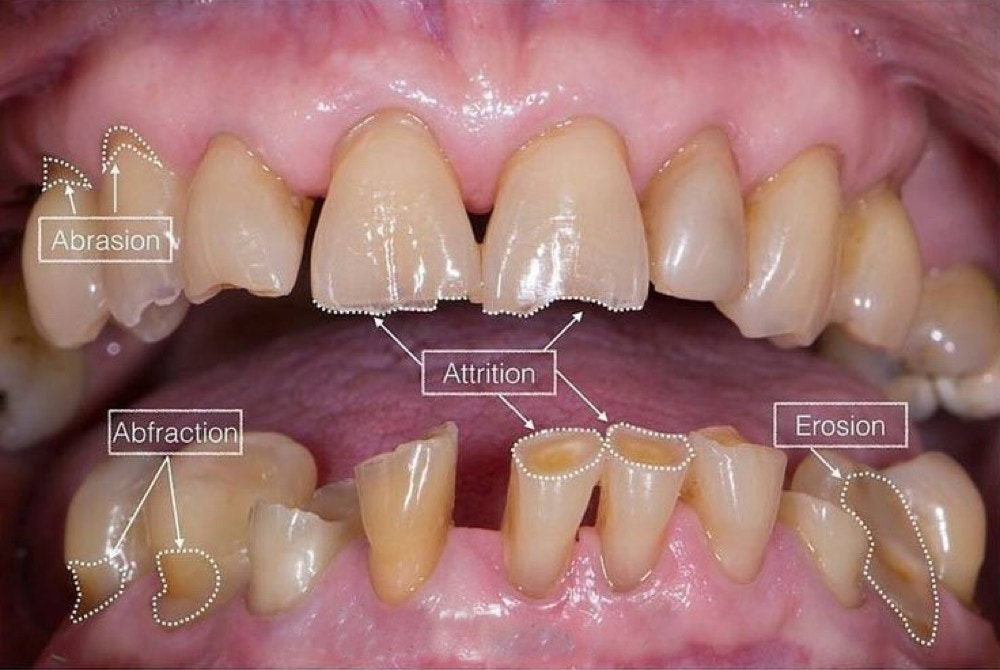-
HOME
-
ABOUT
-
WHY CHOOSE US
-
TREATMENTS
-
FEES
-
CONTACT
-
FAQS
EROSION & ABRASION

Erosion

Abrasion damage is most commonly seen on the teeth at the gum edge as a concavity in the tooth, and can be as a result of overaggressive tooth brushing; it is most often also seen in conjunction with gum recession. In this, the gum of the tooth moves down the tooth, making them appear longer. The neck of the tooth that is exposed is made of dentine. This is softer than enamel, and therefore more prone to abrasion as well as decay. It is also more sensitive, and areas of recession can be more reactive to extremes of temperature, sweet, and even touch. Whilst gum recession can be caused by aggressive brushing, another common causative factor is bruxism (teeth clenching and grinding); this can also be a frequent contributor to cavities at the gum edge (abfraction cavities) and bone loss around teeth.
Abrasion cavities can be filled with tooth coloured fillings, although this is not always the best option. We are able to help you identify and stop the causative factors of abrasion, as well as monitor the severity to ensure that the problem is not worsening. We also have options available to help desensitise abrasion areas, as well as strengthen the remaining tooth structure. The appropriate electric toothbrush is also commonly helpful to reduce the damaging effect of over-brushing, and our hygienists are able to advise how best the clean your mouth without sustaining further harm.
CONTACT US TO BOOK OR FOR MORE INFORMATION
This website makes use of cookies. Please see our privacy policy for details.
OK